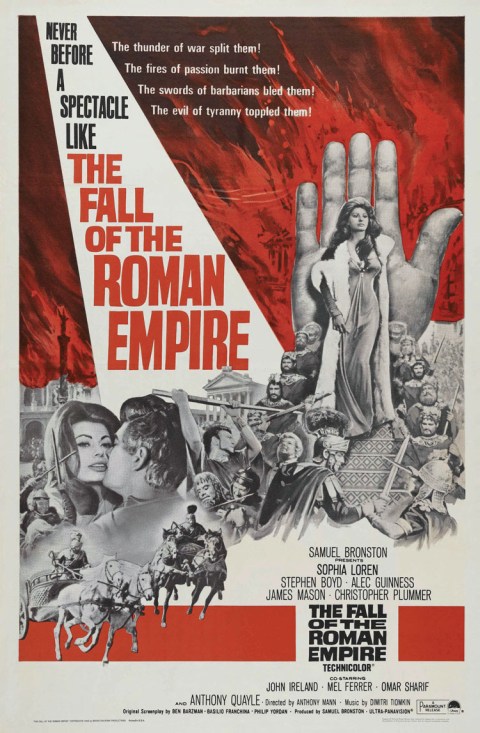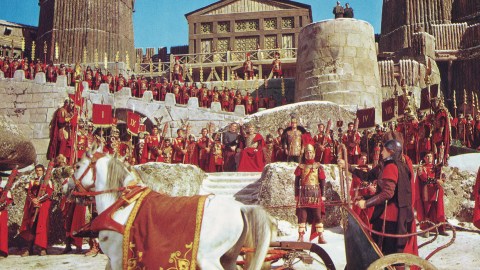17. 4. – 19. 4. 2026
The Fall of the Roman Empire

 Original title: The Fall of the Roman Empire
Original title: The Fall of the Roman EmpireDirector: Anthony Mann
Production: 1964, USA
Length: 188 min.
Annotation for KRRR! 2014
As the title suggests, one of the last films by American director Anthony Mann belongs to the canon of so-called historical epics or works that are called “sword and sandals”. Films categorized in this way had a tradition in Hollywood cinema of the 1950s and 1960s, among whose most prominent examples are Ben Hur (1959), which won eleven Oscars, The Ten Commandments (1956) and Spartacus (1960). One of the last Hollywood representatives of this trend is The Fall of the Roman Empire (1964).
The more than three-hour narrative depicts the Roman Empire on the verge of collapse – Emperor Marcus Aurelius (Alec Guinness) is dying, and he offers his succession to the loyal general Livius (Stephen Boyed), whom he believes will establish peace in the empire. However, Commodus (Christopher Plummer), who is the emperor’s legitimate son and feels like his only possible successor, does not like this. The main dynamic of the whole story is the contrast between the father and son between two different personalities and ideals, which describe the fall of Roman society in a fascinating way. Within the framework of known historical contexts, the audience-pleasing love story between Livio and Commodus' sister Lucilla (Sophia Loren) also takes place, which only forms a secondary plot line. Director Anthony Mann may never have stepped over the shadow of his more famous colleagues, but he was an active creator who was successful across various genres. In addition to noir detective stories, he became famous mainly in the western genre with films such as Winchester 73 (1950), The Bend in the River (1952) or The Trace (1953), in which he showed that he could mix the audience-attractive theme of gunfights with more sophisticated psychology and a greater emphasis on violence. He exploited these motifs not only in his probably most famous work, The Cid (1961), a historical epic nominated for three Oscars, but also in The Fall of the Roman Empire. Mann turned to the genre of historical epic four years after he was fired as director of the similarly-themed film Spartacus, which was later completed by Stanley Kubrick due to creative disagreements with actor and producer Kirk Douglas.
Mann's later The Fall of the Roman Empire is a big-budget Hollywood blockbuster intended for a mainstream audience, but at the same time it deviates in many ways from the poetics of similar historical epics. It combines a genre story and romance on the one hand with heightened realism and naturalism on the other, represented mainly by the psychological deepening of the characters and unadorned acts of violence.
It is precisely these characteristics of the film, which we have identified above in Mann's Western projects, that may well have been one of the reasons why the film failed to succeed with the audience of the time. Along with the competing project Cleopatra (1963), whose expensive filming almost brought 20th Century Fox to bankruptcy, The Fall of the Roman Empire can be considered one of the last titles of this trend, which showed Hollywood grandeur in all its glory. Even though Anthony Mann's film tried to match Ben Hur in many ways (for example, the almost identical action chase with chariots) and did not fit too well into the genre competition, its historical contribution is undeniable - and not only because without it, Ridley Scott's Gladiator would probably not have been made thirty-six years later.